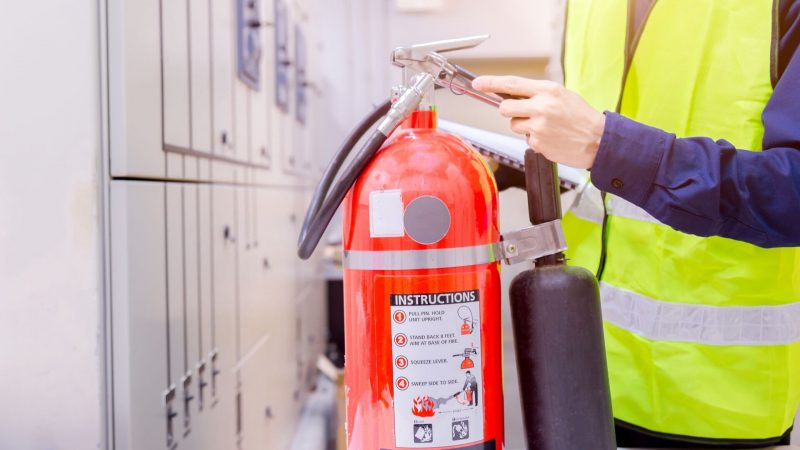People usually use heat treatments to kill bed bugs and it’s proven that this kind of treatment is always deadly. Using a steamer or hot water is great for killing bed bugs but this begs another question – does cold kill bed bugs?
Can bed bugs survive in cold temperatures? Bed bugs can survive in harsh cold temperatures, as cold as -13 degrees Fahrenheit (°F). However, if they are exposed to this temperature for approximately 4 days, they will probably die.
Although bed bugs can be killed by extreme coldness, it’s much more effective to kill them with extreme heat. The heat is much easier to produce than to make -13 °F in your house. Now that we got that out of the way, let’s proceed.
Do Bed Bugs Like Heat or Cold?
In general, bed bugs love pleasant temperatures of around 68 °F. Unfortunately, they can’t survive only in extremely harsh conditions, be it cold or hot.
Let’s take a typical room temperature, it’s around 70 °F, so it’s not cold or hot. Since bed bugs hide in your furniture, chances are that inside the furniture, the temperature is even higher. But bed bugs still live there because it’s cozy, warm, and pleasant for them.
To put it simply, bed bugs love both heat and cold, as long as it’s not too extreme for them.
Can Bed Bugs Survive Cold Temperatures?
Bed bugs may survive in the cold. They can withstand extreme cold well and can function at 46 degrees Fahrenheit. Some bed bugs may even endure brief exposure to -13 degrees Fahrenheit. They will, however, die if exposed to extremely low temperatures (below 0° F) over several days.
Can Bed Bugs Freeze?

Bed bugs can be frozen. However, we need to mention one interesting study by the University of Minnesota. This study showed that bed bugs can survive in the harshest cold conditions for a short period by hibernating.
Do Bed Bugs Hibernate in the Winter?
While bed bugs may not spend months hibernating, they can go into a phase known as diapause, which is a form of semi-hibernation. Bed bugs can go inactive during a period of diapause, which allows them to conserve energy and reduce their metabolism so they can go months without eating.
At temperatures below 61°F, bed bugs may go into diapause. But, when exposed to the extreme cold for more than 80 hours, bed bugs, as well as their eggs start to freeze and eventually die out.
Can Bed Bugs Survive Outside in the Winter?

Bed bugs rarely spend their time outside. They are indoor insects because of their constant need to feed off their host. Spending time outdoors is pointless for bed bugs, as they won’t be able to feed.
However, let’s make a scenario in which bed bugs travel outside in the winter in search of a house to infest. In this case, a sub-zero temperature won’t have a huge impact on bed bugs. When exposed to cold, bed bugs will immediately seek shelter and remain dormant.
Do Bed Bugs Like Cold Rooms?
If a room is cold and there are places to hide, bed bugs will gladly stay there, especially if there’s a host available.
On the other side, bed bugs also don’t dislike cold rooms. There’s not a single scientific fact that connects bed bugs and cold rooms in terms of preferences. Bed bugs will live normally in cold rooms, just as they will in hot rooms.
Can Fire Extinguisher Kill Bed Bugs?

Fire extinguishers can’t kill bed bugs. A typical CO2 fire extinguisher produces a giant CO2 snow particle but its blast is uncontrolled. This means it will scatter the infestation around, further making the problem even worse. Not to mention that the temperature of CO2 in the fire extinguisher isn’t enough to kill bed bugs or their eggs.
The speed of the fire extinguisher is also too slow, so it has no particular effect. In case you’re thinking about testing this for yourself, we wouldn’t encourage nor recommend that. Leave the fire extinguisher for fire and treat bed bugs differently.
Will Freezing Bed Bugs Get Rid of Them?
Freezing bed bugs will get rid of them. A temperature of -4 °F can freeze bed bugs and their eggs. At this temperature, you’ll need only a couple of days to kill all of them.
However, going with a lower temperature means that bed bugs might not freeze and on top of that, you’ll need more time. Spending a week or more on freezing bed bugs is time-consuming and pointless. So, freezing bed bugs will kill them but if the freezing process lasts more than a few days, then it’s pointless and not worth it.
Cold Treatment for Bed Bugs
People often use cold treatments for killing bed bugs. If the cold treatment is done correctly, its effectiveness is 100%, meaning that every bed bug in the particular room will be killed, whether it’s in the wall, bed, mattress, or elsewhere.
The way carbon dioxide treatment works is simple. It draws the bed bugs out of their hiding place and then suffocates them. Some studies showed that concentrations higher than 30% were enough to kill every bed bug in a particular room at 71°F.
The trick is that CO2 increases the mobility of bed bugs but since the oxygen in the room slowly decreases, they’re unable to survive for more than a day. Even if they stay hidden somewhere in the room, they’ll still die because CO2 will now replace the oxygen needed for survival.
Bed Bugs Carbon Dioxide Treatment | Freezing Bed Bugs with CO2

Method 1: Using Dry Ice in a Bucket
Step 1: Before using dry ice (frozen CO2) in the particular room, be sure to seal the room completely, and close the windows but leave the door open.
Step 2: Leave everything in the room. You mustn’t bring your furniture out because bed bugs are most likely inside.
Step 3: Pick up your dry ice in a bucket and put it somewhere in the room.
Step 4: Close the door now and don’t enter the room until the treatment is finished.
Step 5: Wait for 24 to 48 hours and check the room. Bed bugs should now be out of their hiding spots and dead.
Step 6: Repeat the process if you suspect that the first treatment wasn’t enough.
Step 7: Open the windows and let the oxygen fill the room again.
Method 2: Using Cryonite
Step 1: Specialists will often use Cryonite to kill bed bugs. If you can get your hands on it, it’s great. But first, inspect nook and crannies in your room.
Step 2: If there are particular places where bed bugs could hide, these are the places you’ll need to use Cryonite. Mark them somehow, so you don’t forget them.
Step 3: Since this is a compressed product, spray it inside every hole, crack, or surface where bed bugs could hide.
Step 4: Wait for a few seconds to freeze all the bed bugs. After that, it will convert to ordinary CO2 and kill the remaining bed bugs inside.
Step 5: Repeat the process until you’re sure that every bed bug is dead.
Step 6: If you suspect that dangerous levels of CO2 are in the room, open the windows and let the oxygen fill the room.
Cold vs. Heat Treatment for Bed Bugs | Which Is Better?
Cold and heat treatments for bed bugs are effective. If we were to compare them, we can say that they’re pretty much the same.
For the heat treatment, we’re looking at temperatures higher than 113 °F since lower than that will not harm bed bugs. For the cold treatment, temperatures under -0.4 °F are enough to kill an entire infestation. Both of these can wipe out an entire infestation but they do it differently.
The heat treatment makes bed bugs die from very high temperatures but doesn’t attract them to the source of the heat. On the other hand, cold treatment means using CO2 and this gas attracts bed bugs, making them leave the hideout. As for effectiveness, they achieve the same result but differently, so it’s just a matter of personal preference.
List of Sources
Using Freezing Conditions to Kill Bed Bugs, University of Minnesota.
Bed Bug Control: Heat and Cold. Ohio State University.
Bedbugs. Mayo Clinic.
- How to Get Rid of Copperheads | Practical Guide - August 27, 2023
- How to Get Rid of Corn Snakes | What Makes Them Aggressive? - August 27, 2023
- How to Get Rid of Alligators | Safety Measures and Removal Methods - July 16, 2023
